@Faraday40 - Yep, a pretty pullet! I love this breed. My Dominique is my favorite - smart and curious and friendly from Day 1.
Navigation
Install the app
How to install the app on iOS
Follow along with the video below to see how to install our site as a web app on your home screen.
Note: This feature may not be available in some browsers.
More options
You are using an out of date browser. It may not display this or other websites correctly.
You should upgrade or use an alternative browser.
You should upgrade or use an alternative browser.
Sight Sexing Barred Plymouth Rock Chicks at Hatch
- Thread starter aoxa
- Start date
- May 3, 2011
- 49
- 63
- 119
Last edited:
Mine's 11.5 wks & growing fast. She's still the youngest in the flock.
My single comb breeds have much taller combs by 7 weeks, and because yours has so much black, I would guess a pullet. If it is hot outside, a chicks comb may appear darker pink, Pure BR males should have more white barring, while the females have more black. If it's a mix, however, these rules may not apply.
This is not my pic, but it shows the diff.
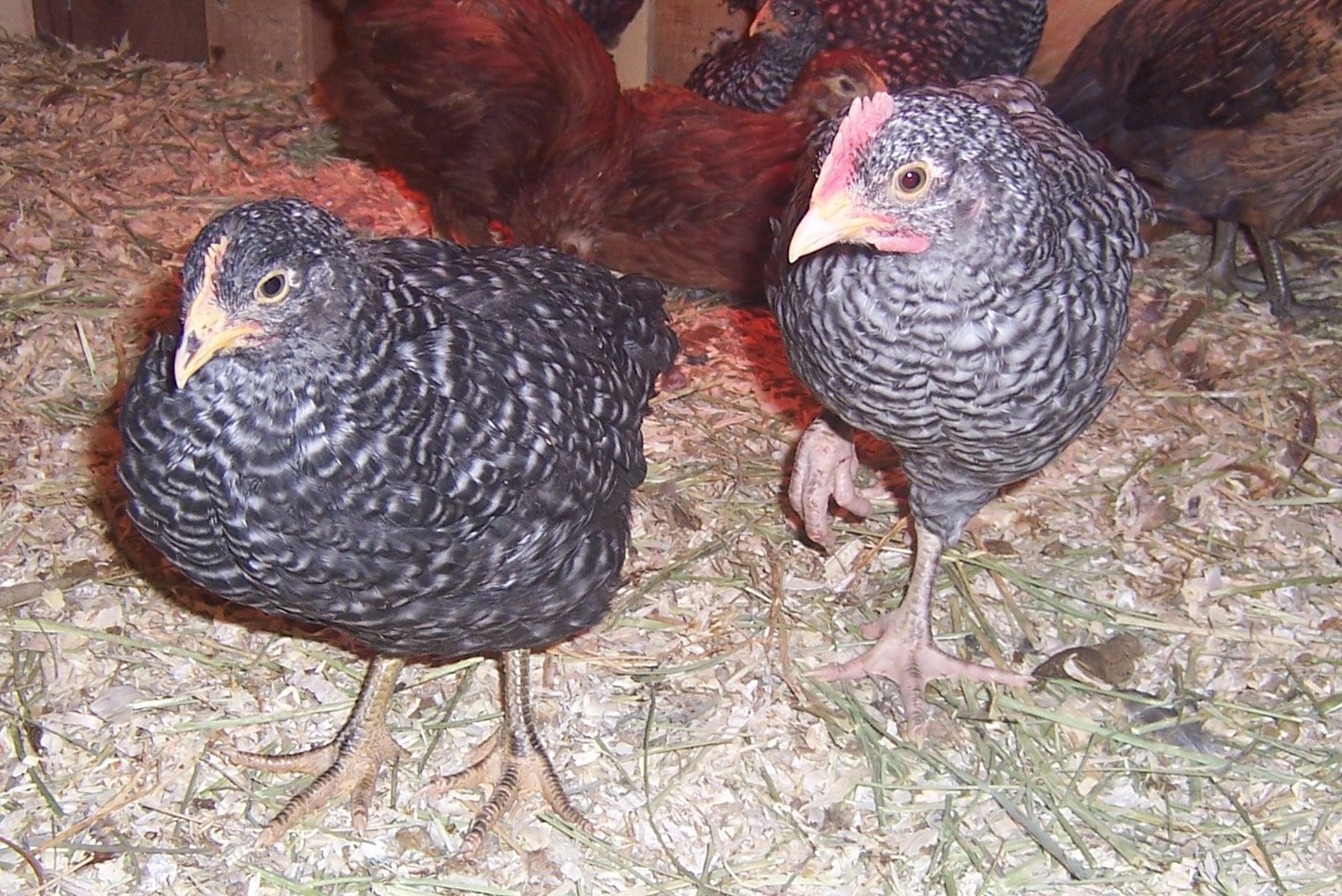
My single comb breeds have much taller combs by 7 weeks, and because yours has so much black, I would guess a pullet. If it is hot outside, a chicks comb may appear darker pink, Pure BR males should have more white barring, while the females have more black. If it's a mix, however, these rules may not apply.
This is not my pic, but it shows the diff.

Nils-Erik
Hatching
- Sep 30, 2015
- 1
- 0
- 6
I bought these chichens a few days ago and wondered if anyone could help me sexing them. I'm not sure of their age. Let me know if I should take pictures from another angle.
1.

2.

3.

All.

Thank you in advance,
Nils-Erik
1.
2.
3.
All.
Thank you in advance,
Nils-Erik
Plymouth rock
Hatching
- Sep 30, 2015
- 4
- 1
- 8
Hi I'm not sure if this worked but I'm wondering if my lucky chick is a female or not. I've read everything above but without another to compare it gets a little hard (I'm a newbie to Plymouth) I was told that my chick is a double barred Plymouth rockI notice a lot of misconceptions about sexing Barred Plymouth Rocks, and I wanted to make a post on just that. They can be sexed at hatch by a combination of down colour, head spot, and leg pigment. It's not just one of these things, but a combination of them. However, once chicks are feathered out they are relatively easy to sex based on overall colour unless you have the Stukel or Good Shepherd line of Barred Plymouth Rocks (you most likely do not have this line, so these tips are valid for you).
Example of fully feathered colour difference before any other sex characteristics are shown:
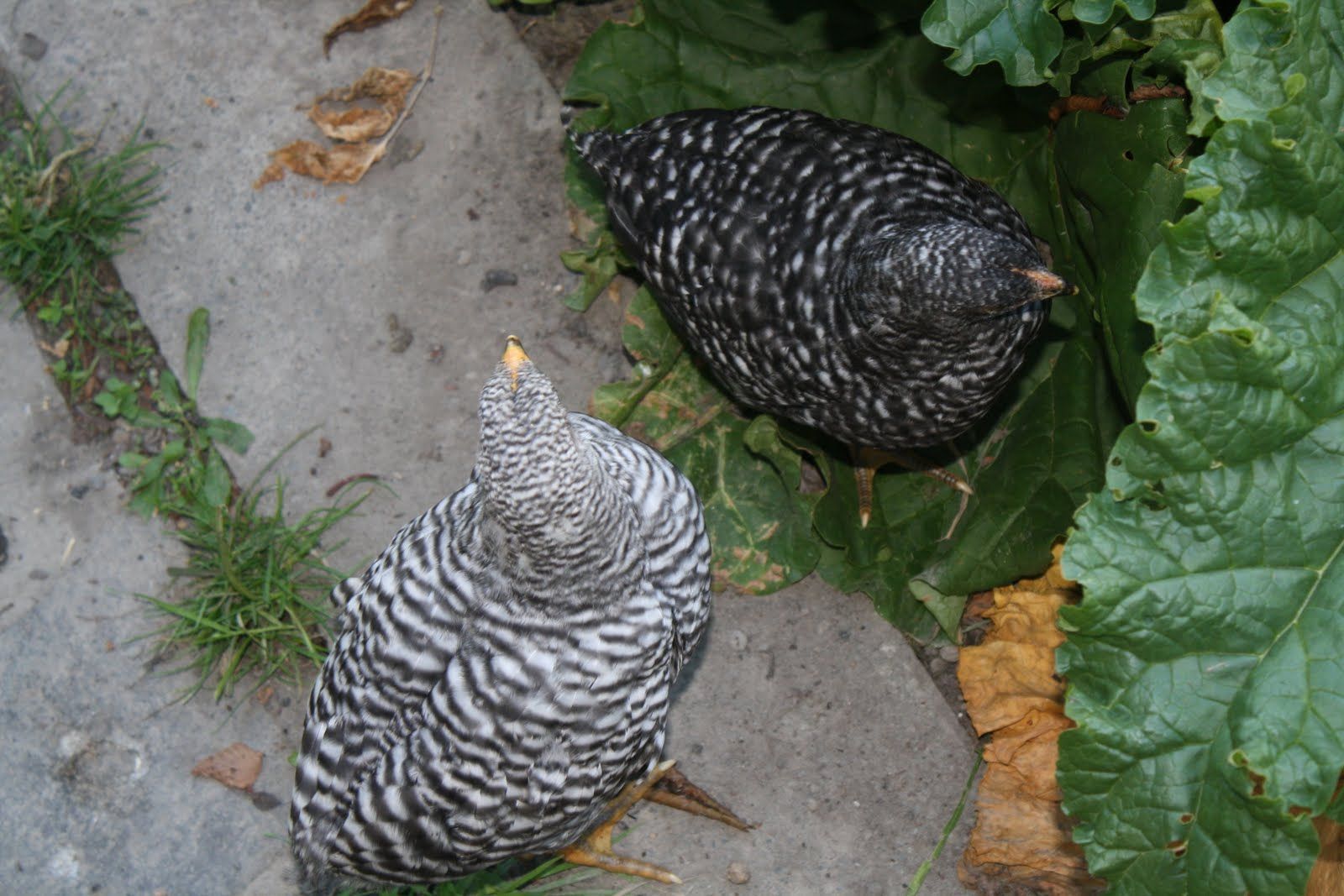
Photo Credit Pullets are overall darker than Cockerels due to having only one copy of the barring gene. Cockerels have two copies and this provides them with more white in between the black bars, giving them the appearance of being a shade lighter. Hens pass down a copy of the barring gene to their son ONLY. The Cock passes down a gene to both his sons, and his daughters. Let's give you some pointers on sexing these chicks once they are hatched and dried off. I came across a really helpful article dated February 1941 - so this is not a new trick. It is tried and true. I have successfully sexed my chicks based on this method:

Examples above are different male head spots
Above are examples of different types of female head spots. See bellow pictures of day olds in colour.Above Males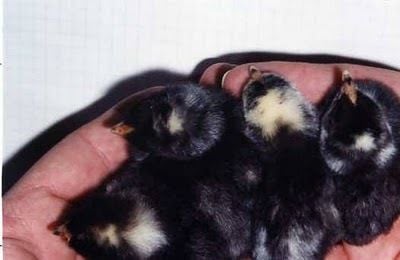
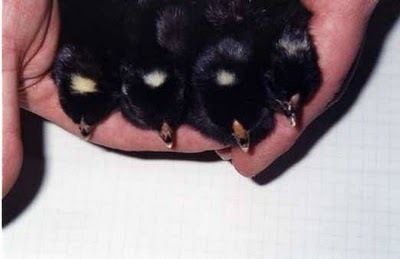
Above FemalesLeg pigment colour difference: Females darker, males lighter Now take into consideration that this works best for common Barred Plymouth Rocks. Exhibition Rocks are much trickier to sex at hatch. It's not about the SIZE of the head spot, but rather the definition of the head dot. An example of one of my MALE chicks at hatch. Small head dot, but not defined. Half circle of cream was visible on head.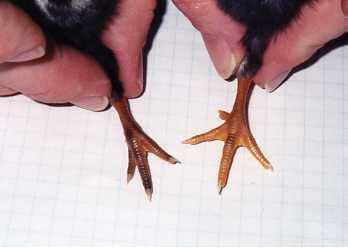
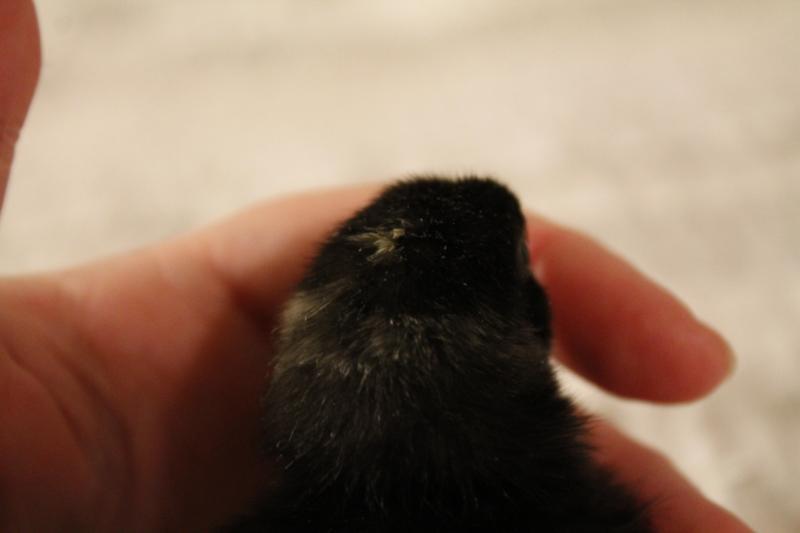
country lovin
Songster
My first barred rock. One day old. Any gueses?



Plymouth rock
Hatching
- Sep 30, 2015
- 4
- 1
- 8
Can someone please tell me if my chick is a pullet or cockerel?
Both of those last 2 are too young to know for sure. Cute little buggers! If you want a guess, @country lovin - boy because the head spot is not compact and defined. @Plymouth rock - girl because barring looks dark and polka dotted (instead of lighter with crisper barring) and legs have black wash down the front. My best guesses at this time.
country lovin
Songster
Both of those last 2 are too young to know for sure. Cute little buggers! If you want a guess, @country lovin - boy because the head spot is not compact and defined. @Plymouth rock - girl because barring looks dark and polka dotted (instead of lighter with crisper barring) and legs have black wash down the front. My best guesses at this time.
Bummer I was thinking the head spot kinda looked like f in the above article, along with the dark feet I was hoping I had picked good. Do you know if they can be wing sexed. The wings have uneven rows of feathers.
Plymouth rock
Hatching
- Sep 30, 2015
- 4
- 1
- 8
Both of those last 2 are too young to know for sure. Cute little buggers! If you want a guess, @country lovin - boy because the head spot is not compact and defined. @Plymouth rock - girl because barring looks dark and polka dotted (instead of lighter with crisper barring) and legs have black wash down the front. My best guesses at this time.
New posts New threads Active threads
-
Latest posts
-
-
Open Contest 2026 BYC Calendar Photo Contest - We Need Your Pictures!
- Latest: talkinboutchickens
-
-
-
-
-
Latest threads
-
-
White Rock meat chickens pecking and bleeding butts
- Started by Druvius
- Replies: 0
-
Rehoming my flock of 6 hens in the Seattle area
- Started by citychicks99
- Replies: 0
-
Cuckoo Marans Hen- photos of foot blue vein or blister??
- Started by mrskenmore
- Replies: 0
-
When to switch food and provide oyster shells?
- Started by efowl24
- Replies: 3
-
-
Threads with more replies in the last 15 days
-
-
Question of the Day - Thursday, August 14th, 2025
- Started by casportpony
- Replies: 75
-
-
-
-
×

